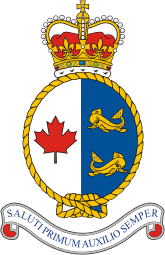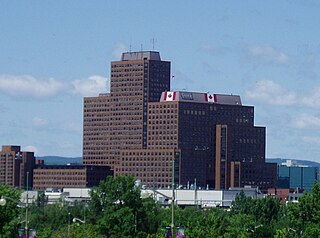Related Research Articles

Environmental law is a collective term encompassing aspects of the law that provide protection to the environment. A related but distinct set of regulatory regimes, now strongly influenced by environmental legal principles, focus on the management of specific natural resources, such as forests, minerals, or fisheries. Other areas, such as environmental impact assessment, may not fit neatly into either category, but are nonetheless important components of environmental law.

The Environmental Protection Agency (EPA) is an independent executive agency of the United States federal government tasked with environmental protection matters. President Richard Nixon proposed the establishment of EPA on July 9, 1970; it began operation on December 2, 1970, after Nixon signed an executive order. The order establishing the EPA was ratified by committee hearings in the House and Senate. The agency is led by its administrator, who is appointed by the president and approved by the Senate. The current administrator is former deputy administrator Andrew R. Wheeler, who had been acting administrator since July 2018. The EPA is not a Cabinet department, but the administrator is normally given cabinet rank.
Environment and Climate Change Canada is the department of the Government of Canada created under the Department of the Environment Act with responsibility for coordinating environmental policies and programs as well as preserving and enhancing the natural environment and renewable resources. The powers, duties and functions of the Minister of the Environment and Climate Change extend to and include matters relating to: "preserve and enhance the quality of the natural environment, including water, air, soil, flora and fauna; conserve Canada's renewable resources; conserve and protect Canada's water resources; forecast daily weather conditions and warnings, and provide detailed meteorological information to all of Canada; enforce rules relating to boundary waters; and coordinate environmental policies and programs for the federal government."

The minister of Crown–Indigenous relations is a minister of the Crown in the Canadian Cabinet, one of two ministers who administer Crown-Indigenous Relations and Northern Affairs Canada (CIRNAC), the department of the Government of Canada which is responsible for administering the Indian Act and other legislation dealing with "Indians and lands reserved for the Indians" under subsection 91(24) of the Constitution Act, 1867. The minister is also more broadly responsible for overall relations between the federal government and First Nations, Métis, and Inuit.

The Canadian Coast Guard is the coast guard of Canada. Formed in 1962, the coast guard is tasked with marine search and rescue, communication, navigation and transportation issues in Canadian waters, such as navigation aids and icebreaking, marine pollution response and providing support for other Canadian government initiatives. The coast guard operates 119 vessels of varying sizes and 22 helicopters, along with a variety of smaller craft. The CCG is headquartered in Ottawa, Ontario, and is a special operating agency within Fisheries and Oceans Canada.

The Oil Pollution Act of 1990 (OPA) was passed by the 101st United States Congress and signed by President George H. W. Bush. It works to avoid oil spills from vessels and facilities by enforcing removal of spilled oil and assigning liability for the cost of cleanup and damage; requires specific operating procedures; defines responsible parties and financial liability; implements processes for measuring damages; specifies damages for which violators are liable; and establishes a fund for damages, cleanup, and removal costs. This statute has resulted in instrumental changes in the oil production, transportation, and distribution industries.
The Department of Natural ResourcesCanada, is the department of the federal Government of Canada responsible for natural resources, energy, minerals and metals, forests, earth sciences, mapping and remote sensing. It was created in 1995 by amalgamating the now-defunct Department of Energy, Mines and Resources, and Department of Forestry.
The minister of public services and procurement is the minister of the Crown in the Canadian Cabinet who is responsible for overseeing the Government of Canada's "common service organization", an expansive department responsible for the internal servicing and administration of the federal government. A flavour for the department is given by the list of acts and regulations for which it is responsible. The minister of public services and procurement is also the receiver general for Canada. The minister is responsible for the Phoenix pay system.
The court system of Canada forms the judicial branch of government, formally known as "The Queen on the Bench", which interprets the law and is made up of many courts differing in levels of legal superiority and separated by jurisdiction. Some of the courts are federal in nature, while others are provincial or territorial.
Fisheries and Oceans Canada, is a department of the Government of Canada that is responsible for developing and implementing policies and programs in support of Canada's economic, ecological and scientific interests in oceans and inland waters. Its mandate includes responsibility for the conservation and sustainable use of Canada's fisheries resources while continuing to provide safe, effective and environmentally sound marine services that are responsive to the needs of Canadians in a global economy. The stated vision of the department is "Excellence in service to Canadians to ensure the sustainable development and safe use of Canadian waters."

Crown-Indigenous Relations and Northern Affairs Canada is the department of the Government of Canada responsible for Canada's northern lands and territories, and one of two departments with responsibility for policies relating to Indigenous peoples in Canada.

Australian Maritime Safety Authority (AMSA) is an Australian statutory authority responsible for the regulation and safety oversight of Australia's shipping fleet and management of Australia's international maritime obligations. The authority has jurisdiction over Australia's exclusive economic zone which covers an area of 11,000,000 square kilometres (4,200,000 sq mi). AMSA maintains Australia's shipping registries: the general and the international shipping registers.

Ice class refers to a notation assigned by a classification society or a national authority to denote the additional level of strengthening as well as other arrangements that enable a ship to navigate through sea ice. Some ice classes also have requirements for the ice-going performance of the vessel.
Canadian privacy law is derived from the common law, statutes of the Parliament of Canada and the various provincial legislatures, and the Canadian Charter of Rights and Freedoms. Perhaps ironically, Canada's legal conceptualization of privacy, along with most modern legal Western conceptions of privacy, can be traced back to Warren and Brandeis’s "The Right to Privacy" published in the Harvard Law Review in 1890, Holvast states "Almost all authors on privacy start the discussion with the famous article 'The Right to Privacy' of Samuel Warren and Louis Brandeis".

The Arctic Environmental Protection Strategy (AEPS) is a multilateral, non-binding agreement among Arctic states on environmental protection in the Arctic. Discussions began in 1989, with the AEPS adopted in June 1991 by Canada, Denmark, Finland, Iceland, Norway, Sweden, the Soviet Union, and the United States. The AEPS deals with monitoring, assessment, protection, emergency preparedness/response, and conservation of the Arctic zone. It has been called a major political accomplishment of the post–Cold War era.

The sovereignty of Canada is a major cultural matter in Canada. Several issues currently define Canadian sovereignty: the Canadian monarchy, telecommunication, the autonomy of provinces, and Canada's Arctic border.

The 1985 Polar Sea controversy was a diplomatic event triggered by plans for the navigation of USCGC Polar Sea through the Northwest Passage from Greenland to Alaska without formal authorization from the Canadian government. It was the United States' position that the Northwest Passage was an international strait open to shipping and it sought only to notify Canada rather than ask for permission.
The Arctic policy of Canada includes both the foreign policy of Canada in regard to the Arctic region and Canada's domestic policy towards its Arctic territories. This includes the devolution of powers to the territories. Canada's Arctic policy includes the plans and provisions of these regional governments. It encompasses the exercise of sovereignty, social and economic development, the protection of the environment, and the improving and devolving of governance.

The Canadian Navigable Waters Act is one of the oldest regulatory statutes enacted by the Parliament of Canada. It requires approval for any works that may affect navigation on navigable waters in Canada.
References
- ↑ Rothwell, Donald R. (1996). The Polar Regions and the Development of International Law. Cambridge, UK: Cambridge University Press. p. 193. ISBN 0-521-56182-5.
- 1 2 "Arctic Waters Pollution Prevention Act, (R.S.C., 1985, c. A-12)". Consolidated Acts. Department of Justice Canada. 1985. Retrieved 2012-07-10.
- ↑ "Table of Public Statutes and Responsible Ministers". Table of Public Statutes, Statutes beginning with A. Department of Justice. 2012. Retrieved 2012-07-10.
| This article about Canadian law is a stub. You can help Wikipedia by expanding it. |